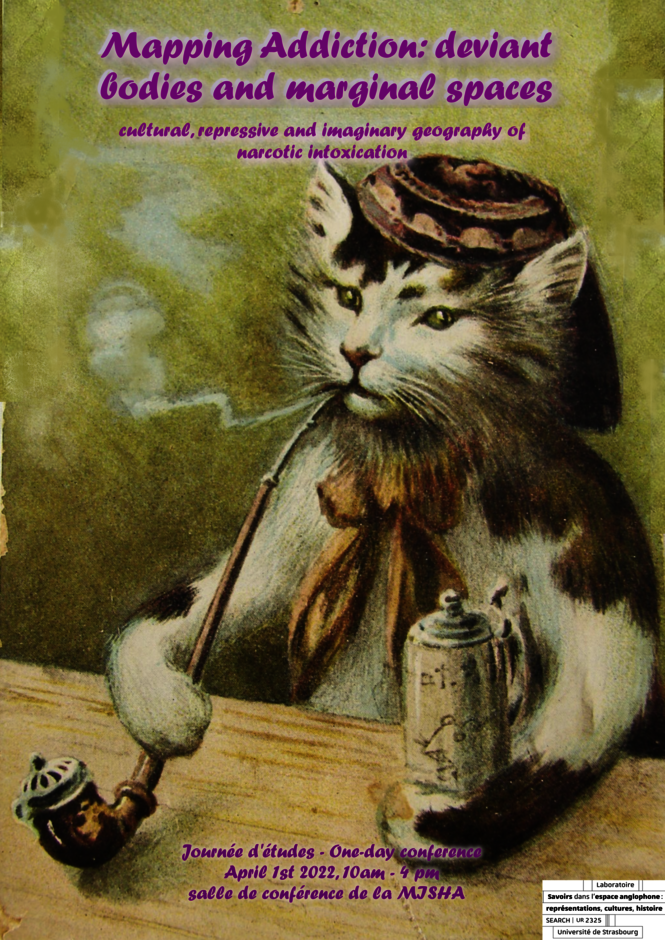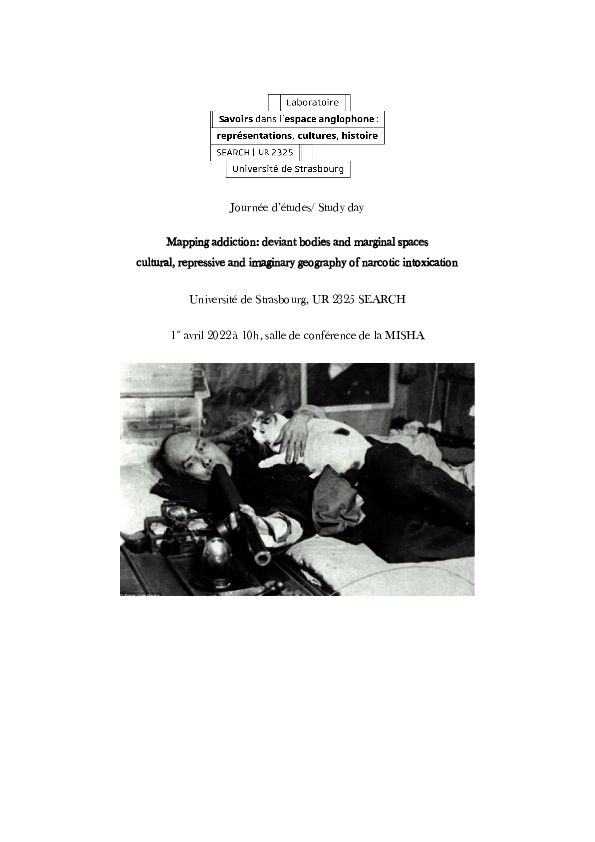Mapping Addiction: Deviant Bodies and Marginal Spaces
SEARCH event organised by Irène Delcourt (IETT, Lyon 3) and Tim Heron (SEARCH).
If, as Michel Foucault suggests, we conceive of the modern world as a complex layering of
heterogeneous spaces, or heterotopias, if, indeed, we “live inside a set of relations that delineates
sites which are irreducible to one another and absolutely not superimposable on one another”,
spaces that are undeniably other to one another, then the geography of addiction is, by essence,
heterotopic (Foucault, 1984). It is also, by definition, subversive. Our reading of the spatiality of
addiction is inherently dependent on its framing as being other and “borderline” – it is deeply rooted
in our perception of its ambivalent relation to mainstream spaces. Defining the conceptual and
physical geography of addiction almost inevitably implies etching the outlines of an irregular self –
exceptional or corrupted –, a seditious counterculture, a diseased body, a subjugated mind, or a
lawless individual; addiction is understood and practiced as an intrinsically norm-violating behavior
and, therefore, routinely circumscribed to a seldom-challenged place of deviance (Becker, 1963). In
short, drug use is still regarded as a marginal practice, confined to marginal spaces.
Mapping addiction, however, means considering the variable geometry, both imagined and
genuine, of drug use and drug cultures within wildly different environments as well as questioning
their relationship to abstract and concrete spatialities through the lens of a wide range of fields of

